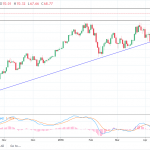The run on the yen continues. The US dollar and euro are at new multi-year highs against the yen. The BOJ confirmed its JPY80 trillion monetary base target unexpectedly adopted at the end of last month. Last month’s seemingly last minute decision was based on a very un-Japanese 5-4 vote. Today, three of the dissents accepted the fait accompli; one did not (Kiuch).

The dollar is approaching resistance near JPY118, but many players feel emboldened by recent developments (and momentum) and are looking for JPY120 in the coming weeks. Despite the talk of “currency wars” and “race to the bottom” there is little official push-back. In late-September and early-October, it seemed that some Japanese officials played down the benefits of a weaker yen. We suggested at the time that one of the reasons for the seeming ambivalence was to indicate to the US and others in the G20 that the yen’s depreciation was the result of market forces and not officials pushing it, as the ECB was pushing the euro.
With the unexpected contraction in Q3 GDP, there is much talk about the failure of Abenomics. We demur, and this is an important interpretative point for investors. If one thinks Abenomics failed, and that next month’s election will result in a new mandate for Abe, then one would have a very negative outlook for the world’s third largest economy. Instead, if one recognizes Abenomics as aggressive monetary and fiscal initiatives, then the sales tax increase was a deviation from Abenomics. The postponement of next year’s planned increase, the supplemental budget was still expected, and the BOJ’s stepped up monetary efforts suggests Abenomics is getting back on track. In the five quarters before the sales tax hike, which was approved on a bipartisan basis by the previous DPJ government, Japan’s economy averaged quarterly growth (at an annualized pace) of 3.25%.












Leave A Comment